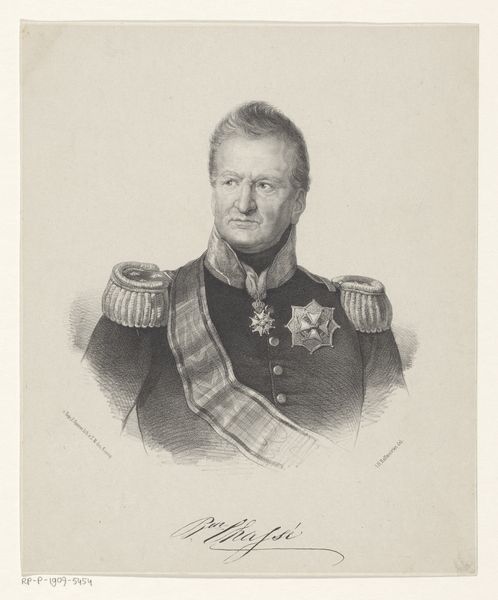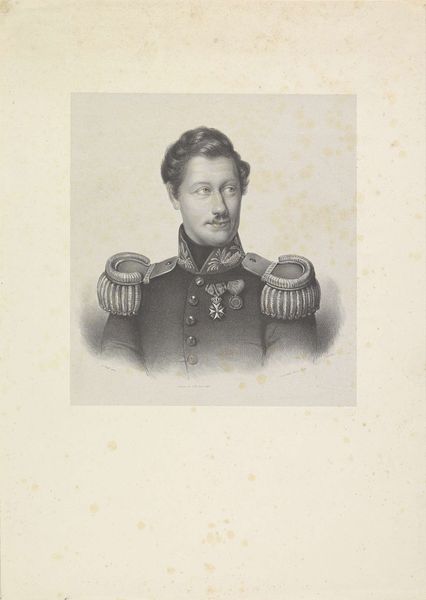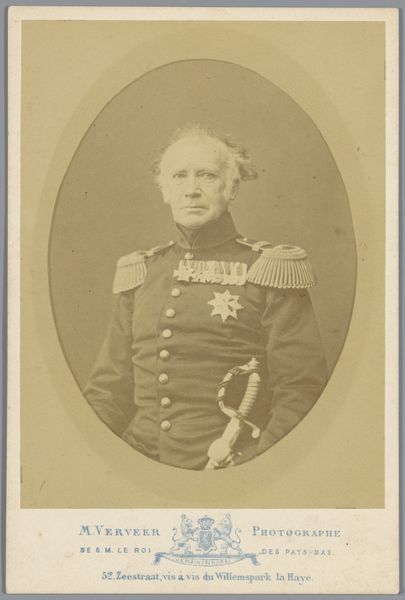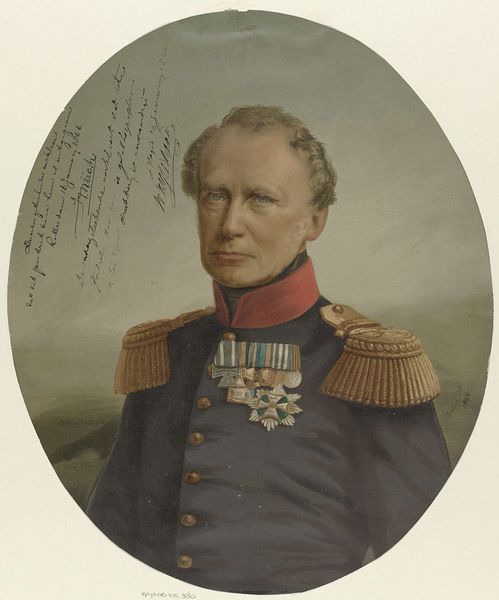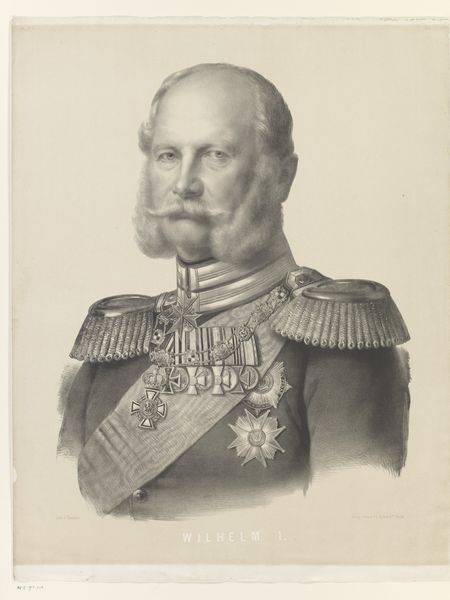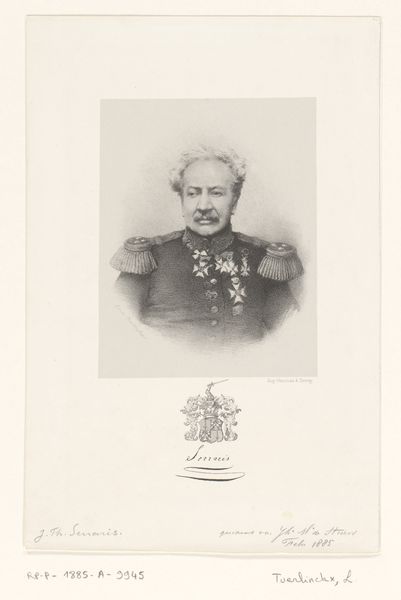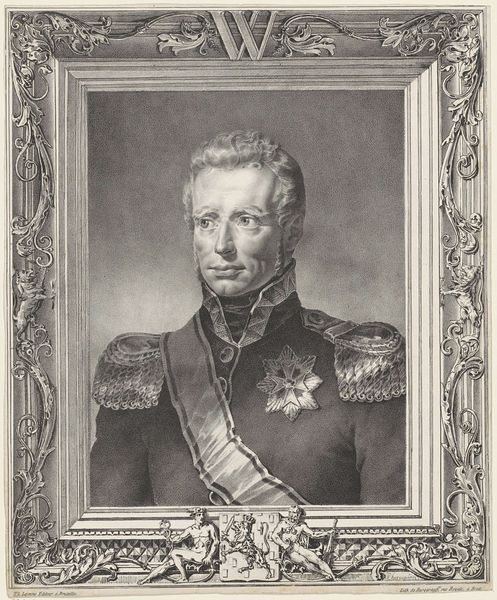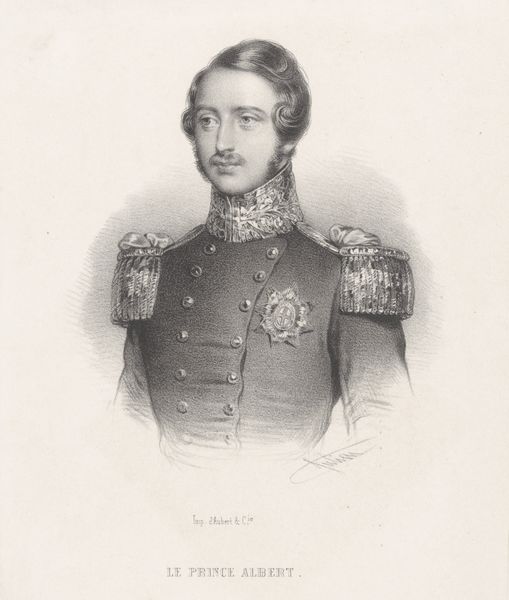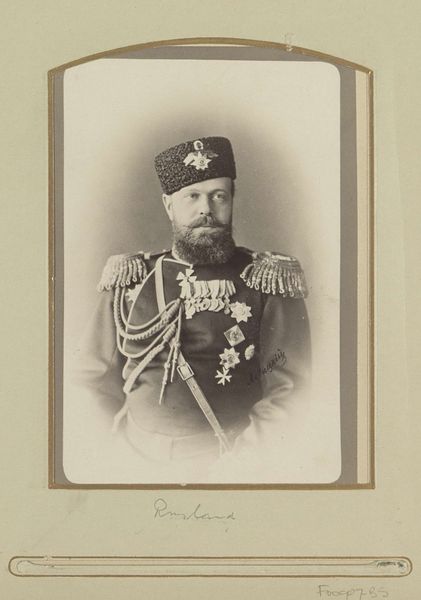
drawing, print, graphite, engraving
#
drawing
# print
#
charcoal drawing
#
pencil drawing
#
graphite
#
portrait drawing
#
history-painting
#
engraving
Dimensions: height 359 mm, width 249 mm
Copyright: Rijks Museum: Open Domain
Editor: Here we have Nicolaas Johannes Wilhelmus de Roode's "Portret van Joannes Josephus van Mulken," created in 1869. It appears to be a graphite drawing, perhaps used for an engraving. I'm struck by the subject's stern gaze and the sheer number of medals adorning his uniform. It really conveys a sense of power and authority. How do you interpret this work, especially given its historical context? Curator: It's crucial to see portraits like these as carefully constructed pieces of propaganda and social validation, beyond mere likeness. This work functions within a larger visual culture where powerful men were presented in a specific, idealized way. Look at the precision of the engraving, how it lends itself to mass reproduction. What effect do you think this would have on the perception of Joannes Josephus van Mulken by the public? Editor: I imagine it would solidify his image as a respectable leader, someone worthy of admiration and trust, someone to be emulated perhaps. It’s almost like early public relations! Curator: Precisely! These portraits, distributed widely through engravings and other prints, reinforced social hierarchies. Van Mulken's medals are not merely decorations; they symbolize service, bravery, and allegiance to the state. It encourages the viewer to see not just a man, but a symbol of the established order. Consider the institutions that likely commissioned and circulated this image: were they governmental, military, or perhaps civic organizations aiming to project authority? Editor: That's fascinating. It completely changes how I see the image, less as a simple portrait and more as a statement about power and social standing, crafted and disseminated by particular institutions. Curator: And that is how visual imagery has always functioned; these institutions often actively managed their images and appearances in the public eye, consciously using portraiture as a political tool. Editor: This has made me think so much more about the purpose and audience for this portrait, and how that impacts its meaning. Thanks!
Comments
No comments
Be the first to comment and join the conversation on the ultimate creative platform.
